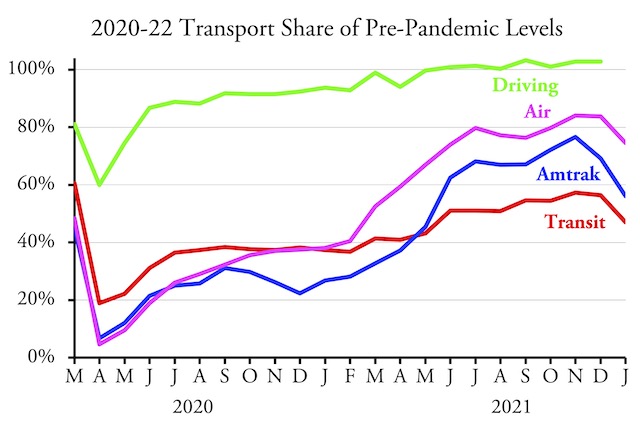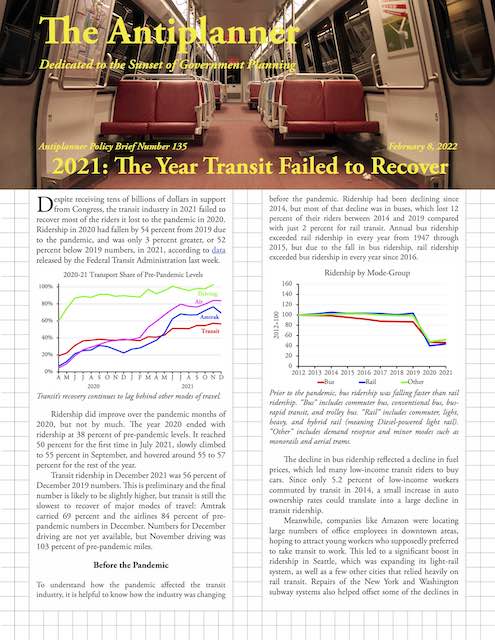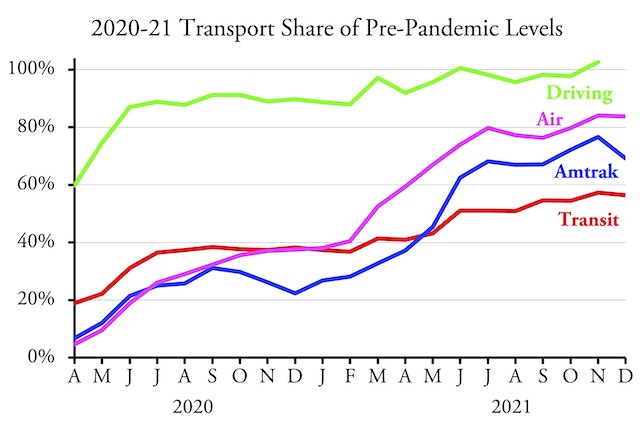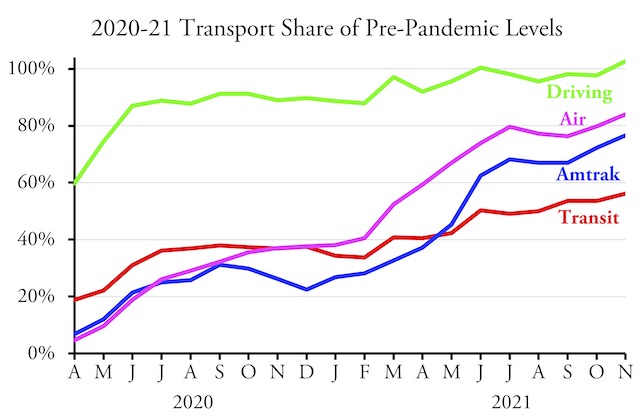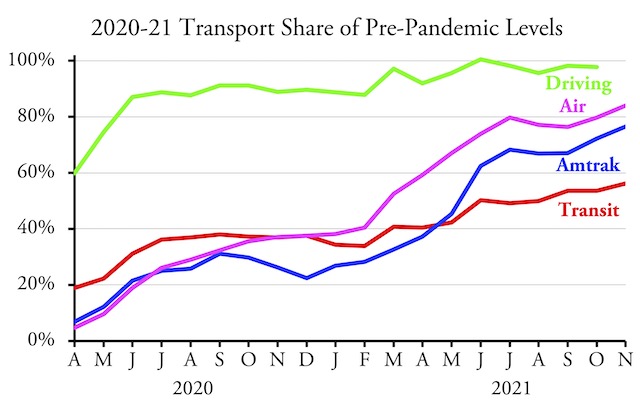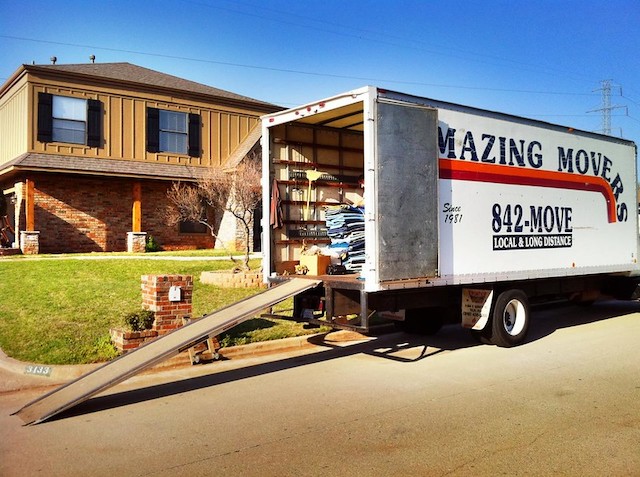Most modes of travel took a nosedive in January, whether measured on a month-to-month basis or compared with pre-pandemic travel. Amtrak passenger-miles fell from 404 million in December to 231 million in January. January travel is generally a little less than December’s, but in this case it is much less: as a percent of pre-pandemic numbers, Amtrak passenger-miles fell from 69 percent in December (relative to December 2019) to 56 percent in January (relative to January 2020), according to Amtrak’s Monthly Performance Report.
Transit is also lagging behind, according to data released earlier this week by the Federal Transit Administration. Transit carried 377 million riders in January, down from 438 million in December. As a share of pre-pandemic numbers, transit fell from 56 percent in December to 47 percent in January. Continue reading

